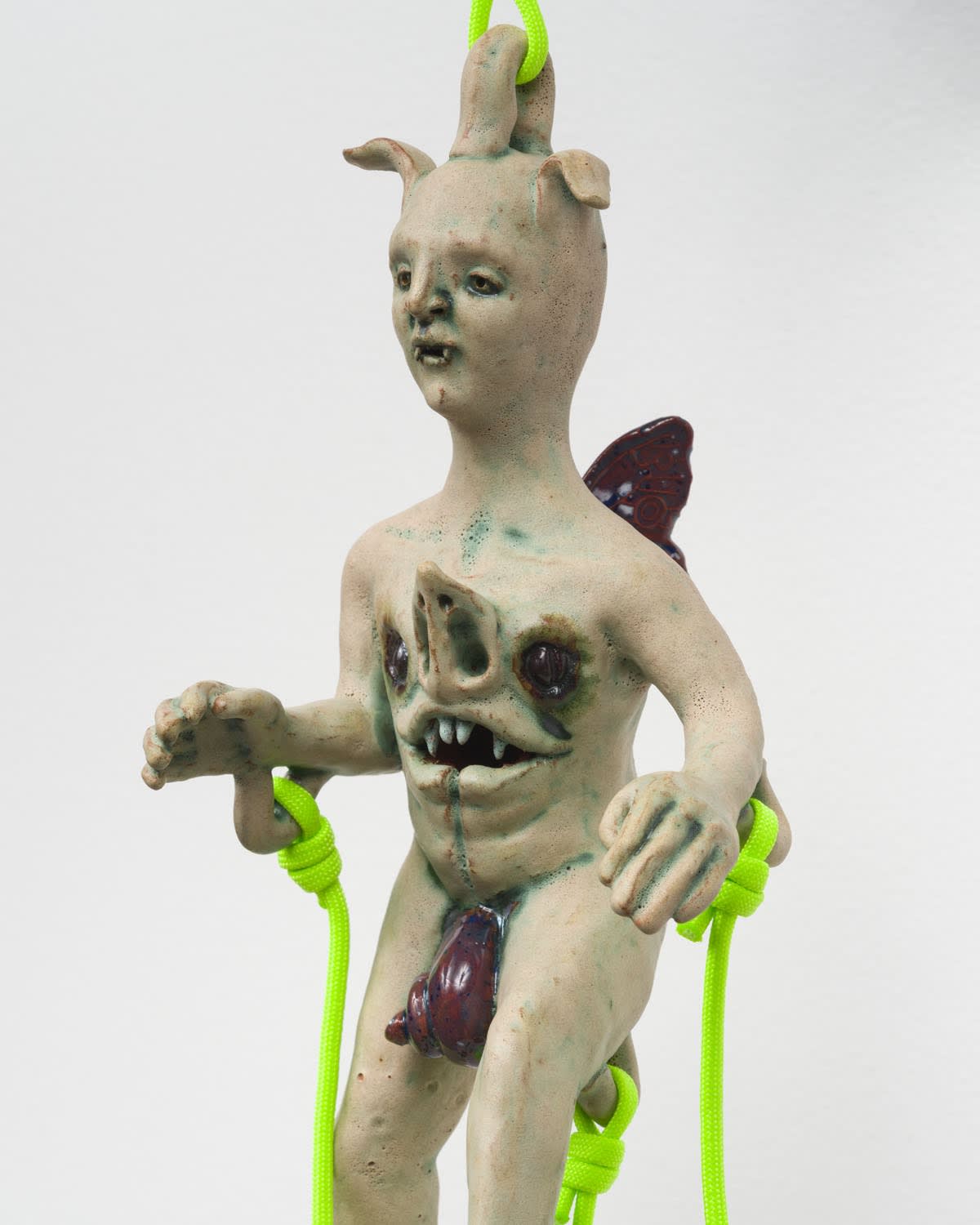
From the aging process of clay comes a garden of life.
Curated by alumnus Charles Snowden, the exhibit, “Senescent Stone,” is on display at the Shulamit Nazarian until Oct. 29. As he continues to sculpt ceramic art after his graduation, Snowden said he incorporates the role caretaking and parenting play in gardening as well as the cycle of life and death into each piece of clay. He said the exhibit features 18 ceramic pieces, which range from votive models of hands to the tiles that create the garden path. With his pieces centered on botanical life, he primarily drew inspiration from his newfound interest in gardening during the pandemic, Snowden said.

INSTALLATION VIEW, CHARLES SNOWDEN: SENESCENT STONE. (COURTESY OF THE ARTIST AND SHULAMIT NAZARIAN, LOS ANGELES. PHOTO: ED MUMFORD)
Through developing his ceramic garden, Snowden said he wanted to connect the space of his home garden to the human body in his art, taking inspiration from spiritual objects that ancient civilizations used to deter evil from spaces like a garden. He said his work was influenced by the ancient Romans, who separated the garden from the household with large wind chimes shaped like male genitalia in order to defend against bad luck. Emulating the enlarged anatomy of the ancient wind chimes, Snowden said he focused on creating 20- to 30-inch hands to emphasize their role in both gardening and caretaking.

Charles Snowden, Wrung Wraith (detail), 2022. Ceramic, glaze, paracord, cast iron, 30 x 6 x 9 1/2 in. (Courtesy of the artist and Shulamit Nazarian, Los Angeles. Photo: Ed Mumford)

Charles Snowden, Good Luck (In Bocca Al Lupo), 2022. Ceramic, glaze, 23 x 10 x 7 in. (Courtesy of the artist and Shulamit Nazarian, Los Angeles. Photo: Ed Mumford)
“They (hands) also become vessels in a way,“ Snowden said. “I think of them as sort of amphora or containers for the objects they’re holding and adorning. Amphorae have their own history as containers for food, but (also) human remains. So, they (amphorae) would act as a type of coffin in some cases.”
Extending his hand sculptures’ connections to the “circle of life,” Snowden said he titled his exhibit “Senescent Stone” to bridge the physical process of firing ceramics on the kiln with the cyclical process of life and death in a garden. Linking ceramics’ physical properties to human mortality, he said ceramics’ senescent phase occurs once it is finally glazed. Referencing Bengal clay making, Snowden said the ceramic is most spiritually powerful when unhardened because of the abundance of microorganisms and life still inhabiting the clay. He molded some of his pieces into a terracotta-bisque state to represent the potential for life, juxtaposed by completely glazed pieces devoid of life.
Furthering his exhibit’s focus on life cycles in the garden, Snowden said he also included mosaic tiles inspired by the Roman tradition of discarding food waste on the floor to show familial wealth and honor the dead. He said he wanted to incorporate the food grown from his garden in these tiles to connect the ancient homage to the dead with his own appreciation for the caretaking aspect of gardening.
“Being engaged with gardening are cycles of regeneration through decay and through death,” Snowden said.
“You’re in conversation with different processes of death and life within every day, whether or not you want to be.”
Kristen Morgin, Snowden’s mentor and art professor, said Snowden broadened his artistic scope in the graduate program by experimenting with video-based digital art, which included a video project recording Charles’ progress building the garden. Morgin said the sound of his mother telling stories about her time as a caretaker plays over the video, emphasizing his garden’s role as a haven. To incorporate his mother’s storytelling into his ceramic hands, Snowden said he tied the historical significance of hand gestures as a ritualistic blessing to the way a hand moves during storytelling in his pieces.
Assistant art professor Candice Lin said Snowden showed his prowess in artistic symbolism as a teaching assistant for her course. Lin said Snowden was able to branch out from analyzing only Western European artistic tropes to incorporating ideas from artists of color, such as Rafa Esparza. She said Snowden’s diverse exploration of artistic themes added depth to his work, which can be seen in his ceramics at the Shulamit Nazarian.
“For people who don’t know this larger context that the work comes out of, it (the exhibit) seems almost fantastical,” Lin said. “But for me, it’s interesting to know that this kind of world that he’s created at Shulamit, where the human is decentered, comes out of this trajectory about thinking about all these different bodies of his work that came before and the different things that he was exploring in them.”
Continuing to explore ancient traditions through his art, Snowden said he enjoys ceramics because of its malleability, as the initial plan for creating a piece does not ultimately determine the clay’s final form. He said he is always negotiating with practicality and creativity, as he constantly updates his vision as the clay runs through his hands.
“I don’t think it (clay) has a lot of limits,” Snowden said. “It’s just how much time you want to take to actually defy gravity.”

Charles Snowden, Window, 2022. Ceramic, glaze, 23.5 x 17.5 x 1 in. (Courtesy of the artist and Shulamit Nazarian, Los Angeles. Photo: Ed Mumford)


